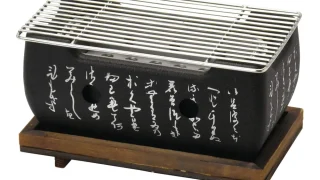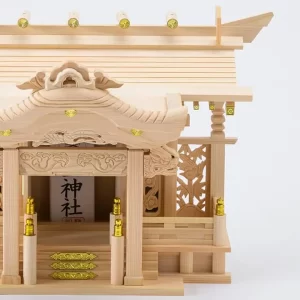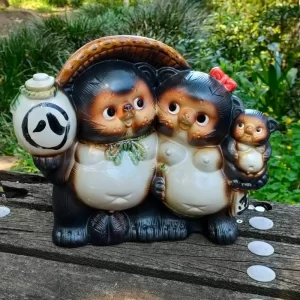Types of Kamidana Shinto altar and how to choose and amulet plate
There are so many types of Kamidana Shinto altar. Many people may be at a loss as to which one to choose.
Here are some tips on how to choose the right one for your first Kamidana Shinto altar.
Contents
About the size of the Kamidana Shinto altar
First, make sure that the Kamidana Shinto altar you choose is large enough to fit in your installation space.
Also, check whether the Kamidana Shinto altar is the type that holds the amulet plate inside or the type that can be placed inside the altar.
The design of the Kamidana Shinto altar
Kamidana Shinto altar comes in a variety of shapes and designs.
・A one-roofed Kamidana Shinto altar with a door
・A full-fledged Kamidana Shinto altar with three roofs
・The Kamidana Shinto altar is a modern design that is perfect for living rooms in Western-style houses and condominiums.
・The Kamidana Shinto altar is a modern design that is perfect for Western-style homes and condominiums.
There are a wide variety of types.
You can choose the Kamidana Shinto altar that best fits your installation and the atmosphere of your home.
Kamidana Shinto altar does not have a fixed shape. Therefore, you can choose the Kamidana Shinto altar that best suits your environment.
Amulet plate to be enshrined in the Kamidana Shinto altar
More important than the Kamidana Shinto altar is the amulet plate.
The amulet plate becomes the Kamidana Shinto altar only when it is enshrined.
The following is an explanation of the meaning and types of amulet plates.
The amulet plate is the Imperial Seal in which the deity dwells
The amulet plate is the imperial seal in which the spirit of the god who has undergone the descent ceremony before the gods dwells. Since it is a gift from God, it should be handled carefully and reverently.
Jingu Taima (amulet) and Ujigami Taima (amulet)
The Jingu Shrine at Ise, located in Ise City, Mie Prefecture, is dedicated to Amaterasu Omikami. Amaterasu is the deity of all Japanese people, and the amulet plate of the shrine is called "Jingu Taima (amulet)".
Ujigami are deities who protect the land and its inhabitants. In ancient times, deities closely related to the same family were called Ujigami-sama, and the amulet of a shrine dedicated to Ujigami-sama is called "Ujigami Taima".
It is recommended that the Ujigami Taima of Ujigami-sama be enshrined together with the Jingu Taima (amulet) of Ise Jingu Shrine on the kamidana, but if this is difficult, the Jingu Taima (amulet) alone should be enshrined.
Replacement of the amulet plate
Once the amulet plate is enshrined, it should not be left in place forever.
The following is a brief explanation of when to replace the amulet plate and the period of protection (replacement period) of the amulet plate.
Renew the amulet plate every year.
The amulet plate should be replaced once a year.
After a year has passed, the amulet plate, in which the deity resides, is returned to the shrine as a token of gratitude.
After a year has passed, the amulet plate is returned to the shrine as a token of our gratitude, and a new amulet plate with a new spirit is placed at the shrine so that we can live peacefully and safely in the new year. The Kamidana Shinto altar should be cleaned before the new amulet plate is placed in the altar.
If the Kamidana Shinto altar or Shinto ritual utensil is damaged or soiled, replace it.
It is a good idea to renew the Kamidana Shinto altar and ritual objects in time for the New Year.
Author Profile
Latest entries
 matcha bowl / Yunomi tea cup2025年1月21日Kutani ware teacups are very easy to use
matcha bowl / Yunomi tea cup2025年1月21日Kutani ware teacups are very easy to use Japanese style BBQ stove grill2025年1月20日Combine a Japanese style BBQ stove grill and sake cups for a special dinner
Japanese style BBQ stove grill2025年1月20日Combine a Japanese style BBQ stove grill and sake cups for a special dinner SAKE bottle and SAKE cup2025年1月17日Mino Ware Gold-painted Sake Ware is Very Beautiful
SAKE bottle and SAKE cup2025年1月17日Mino Ware Gold-painted Sake Ware is Very Beautiful NEWS2025年1月17日Tatami rush grass nap Fluffy Foldable Sleeping Mattress is comfortable
NEWS2025年1月17日Tatami rush grass nap Fluffy Foldable Sleeping Mattress is comfortable


